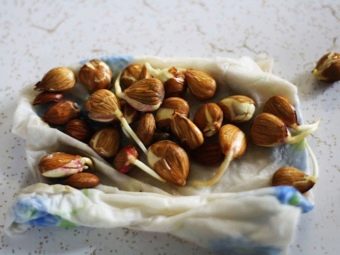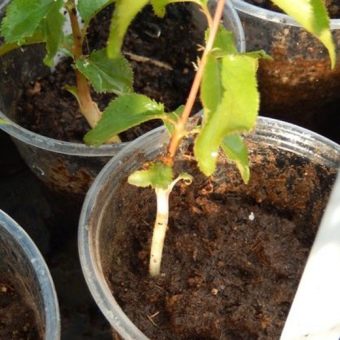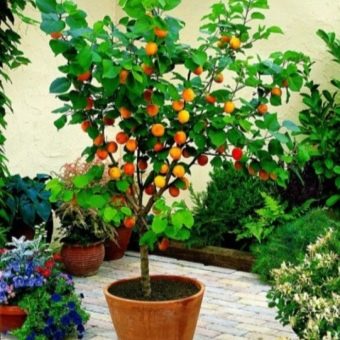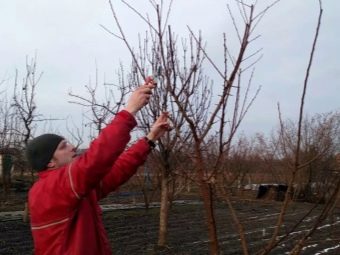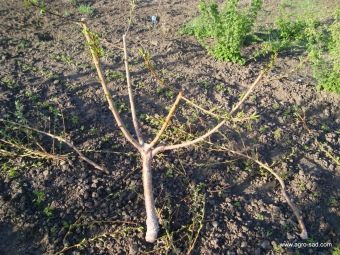How to grow apricot from the stone?
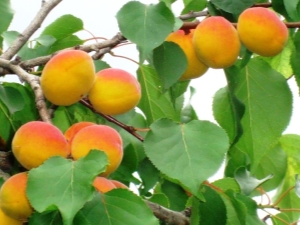
Fragrant and juicy fruits of apricots like everyone. They are tasty and healthy. Many gardeners in different regions dream of growing this crop on their land.
There are two ways to fulfill this dream:
- buy ready-made seedlings on the market or in a specialty store;
- try to grow them yourself from the seed.
The second is more suitable for lovers of experiments, since the care of young seedlings will require a lot of patience, attention and work.
Special features
In order for the seedlings to grow well and enjoy a rich harvest for a long time, It is important to consider some conditions.
- Choose apricots for growing, taking into account the climatic conditions of the region. When choosing, you need to follow some simple rules.
- It is advisable to take the bones from the local fruit, the most ripe (even overripe), soft and sweet. If you sow southern varieties in a cold climate, they will either not grow at all or will die from frost in the very first winter.
- Planting material can be ordered from amateur gardeners from Southern Siberia, Khakassia or Orenburg - these plants will grow and bear fruit in almost any locality, since they have passed natural selection and good hardening in a harsh climate.
- Remember that the germination of apricot kernels is very low, about twenty - thirty percent, therefore, they need to be sown, as they say, “with a reserve”.
- Seedlings do not always inherit the taste qualities of the parent plant - wild fruit can grow from a bone from a sweet apricot, perhaps, on the contrary, the fruits will be of higher quality. In this way, you can bring a new, own sort of apricot.
- The first fruits of young trees will give only after six - seven years. Only then will the results of the experiment be made known.
How to plant?
It is quite possible to grow an adult fruit-bearing apricot from the stone at home. Step by step instruction includes several actions.
Before planting the seed must be cleaned of pulp and rinsed. Then soak for two to three days in rain, snow or spring water, changing it daily.
Pop-ups can be immediately thrown out without regret - these are “empty cases”, nothing will grow from them. There is another popular way to determine the ripeness: taste the core. Sweet ones can be planted; bitter ones can be thrown away — nothing good will come of it.
Landing dates may vary.
- "From mouth to earth" - The bone from the eaten fruit immediately plant in the ground.
- Late autumnas soon as the soil is slightly frozen above. At the same time, future seedlings undergo natural selection, in spring only the strongest and strongest will grow.
- If the fall did not work out to plant the bones, it can be done and in the spring.
In the latter case, forced stratification (germination). For this, the soaked bones are poured with clean river sand, vermiculite or sawdust, moistened and placed in a refrigerator at a temperature of +2 degrees for three to four months before the onset of heat. Care should be taken to ensure that the filler is constantly wet, but at the same time to prevent stagnation of water and mold.
You can simply wrap the bones in a damp cloth and place in a plastic bag or a container with a lid. Sometimes, in order to speed up the stratification process, crops are satisfied with temperature drops. To do this, the container is placed first in the freezer for several hours, and then on the lower shelf of the refrigerator, where the temperature is about +8 degrees.
After the appearance of sprouts, it is better not to pull off the landing, since the delicate roots are easily damaged.
You need to prepare a place in advance: dig a trench (the depth of a shovel bayonet), fill it with humus or well-rotted compost. Bones are planted to a depth of three to five centimeters, keeping a distance of at least ten centimeters between them.
If you plan to grow a seedling immediately in a permanent place, without a transplant, prepare a planting pit as for an ordinary seedling. Fill it with humus or compost, add a handful of wood ash. In the center of the pit is placed a stone also at a depth of three - five centimeters.With this method of planting, saplings usually enter fructification two to three years earlier, since the root system is not injured when digging. The main taproot goes far in depth, which provides in the future a better supply of moisture and nutrients, and also gives the tree additional stability against strong winds.
If necessary, you can plant the bones at home in a pot with nutritious soil.
- For each plant is better to take a separate container. Suitable disposable plastic glasses with a volume of half a liter or plastic bottles.
- In the bottom, be sure to pierce the holes for the flow of excess water.
- The soil can be purchased (universal mixture) or you can make it yourself by mixing garden soil, humus (or biohumus), adding a little fine vermiculite. To keep moisture better, add coconut substrate (pre-soaked before swelling).
- At the bottom of the glass is placed a layer of expanded clay fines for drainage.
- From above poured the prepared soil, not reaching one - two centimeters to the top.
- In the center of the pot on the surface of the soil are germinated bones of one piece in each. Build them into the ground is not necessary. Slightly sprinkle only the spine.
- Crops are watered with a small amount of warm water and covered with foil, the pot is put in a warm place.
- Landings periodically need to inspect, air and remove condensate from the film.
- At emergence of shoots the shelter is removed, and plants are placed on a sunny window. The optimum temperature for the growth of apricot + 24 ... 26 degrees.
- Water moderately when the soil dries out slightly.
- Such seedlings before planting need to harden - put in a cool, well-lit place.
Apricot can grow and bear fruit in the room.
Transplantation in open ground
It is better to transplant seedlings immediately in the first spring. A young tree will have time to take root for the summer, get stronger and prepare for winter.
Apricot is a heat-loving plant, so it is better to choose for it a sunny place, closed from the northern winds and drafts.
- Planting pits are prepared in advance in the fall.
- If groundwater at a dacha lies close to the soil surface, seedlings are placed on bulk hills to avoid overheating. For the same reason, the root neck of the seedling cannot be buried.
- Apricot is loyal to the composition of the soil, but it will be best to grow and bear fruit on loams.
Usually a bone-grown apricot blooms for the first time in the fourth - sixth year.
Care
Young seedlings and newly planted seedlings can damage birds or animals. To avoid this, each seedling can be covered on top with a plastic bottle with a cropped bottom. Such simple protection will allow plants to grow peacefully and gain strength.
Grown from pits apricots unpretentious and do not require special care. They are well adapted to the composition of the soil and the climate of the area where they were sown.
Therefore, timely weeding, loosening and watering, if necessary, will be quite enough for them. In regions with a harsh climate, it is better to cover young plants for the winter in order to protect them from frost and rodents.
The following year, in the spring, they begin to prune and form the crown of the future tree:
- remove frozen and weak, undeveloped branches;
- too long shoots shorten;
- The tips of the branches are clamped for better branching.
In the future, as the crown continues to grow, they continue to form, removing inward and intersecting branches.
They weed, watered and loosened the soil around the seedlings. It should be remembered that the root system of the transplanted apricot is superficial. Therefore, after each irrigation, tree trunks need to be mulched with sawdust or other suitable materials. You can equip the garden and plant flowers or vegetables.
If the taste of fruit is mediocre, apricot can be planted with cuttings from other trees.Grafting several different varieties into the crown significantly increases the quantity and quality of the crop. This is due to cross-pollination.
Care of mature trees includes timely watering, weeding, sanitary and formative pruning and additional feeding.
After the onset of fruiting, it is important to ensure that the branches do not break off under the weight of the fruits, to substitute props for them.
Growing tips
Every gardener can grow apricot from a stone on his plot.
It is important to remember the following points:
- choose the planting material;
- check germination;
- stratify;
- sow at the right time;
- carefully care for the seedlings, protect them from damage by birds, rodents and frost;
- timely form the crown of the tree, carry out sanitary pruning;
- in the fall after harvest, feed with potash-phosphate fertilizers.
If you follow the planting technology and carry out all care activities, then after four to six years you can enjoy fragrant and sweet fruits from your own garden.
How to grow apricot from the stone, see the video below.









